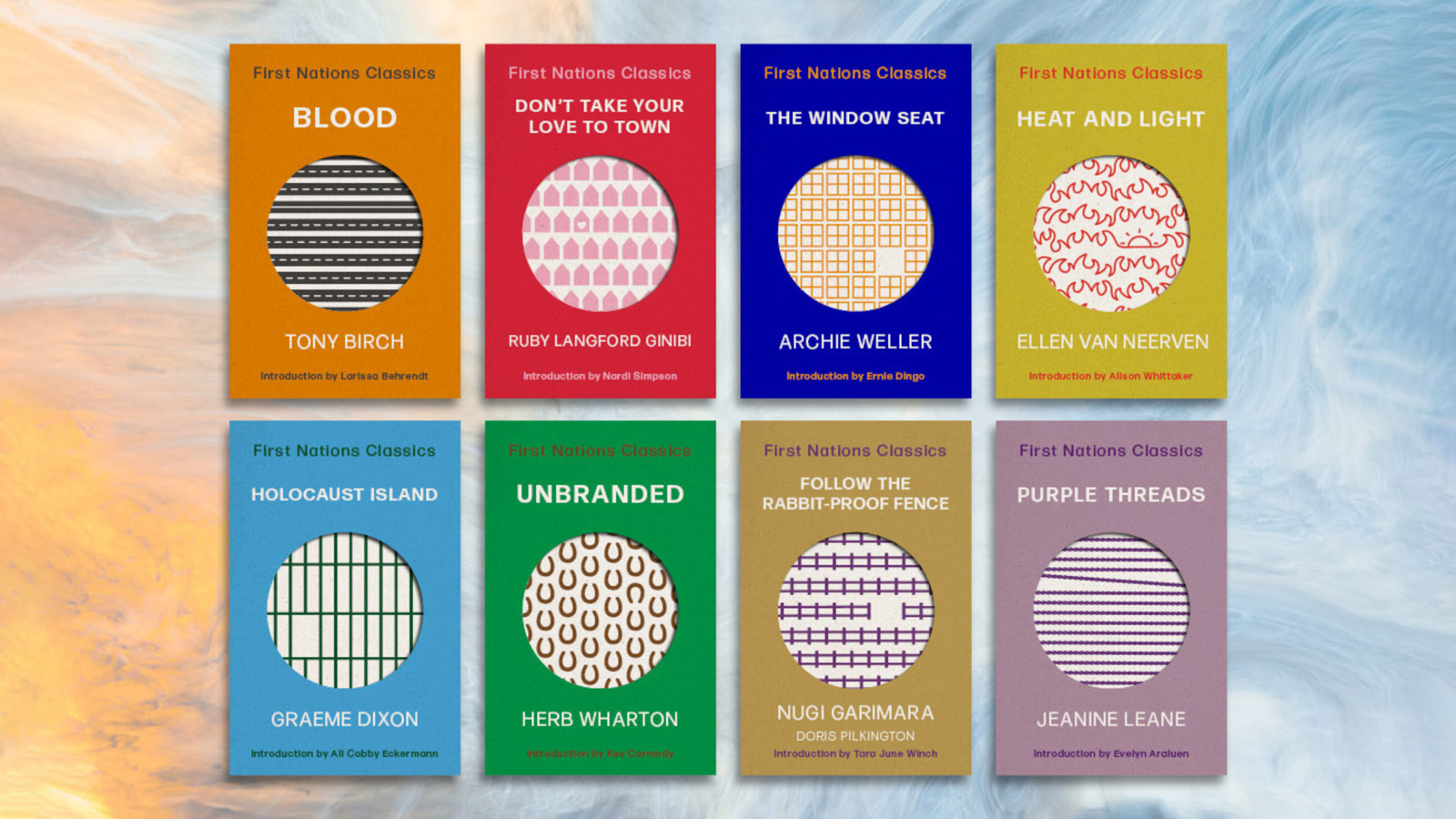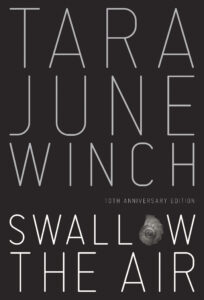Creating the First Nations Classics collection
The University of Queensland Press (UQP) has a respected, richly diverse backlist of First Nations literature. With the staunch support of their reading community, the independent publisher set out to create a series that celebrates the legacy of groundbreaking First Nations writing and, in doing so, offers a sense of rediscovery.

The First Nations Classics were shaped out of a simple idea of resurgence. Bridget Caldwell-Bright speaks with the editor of the collection, Yasmin Smith, about the appetite for First Nations stories, and what it means to honour these significant works.
Firstly, can you describe your editorial role within this project and your work more broadly with UQP?
As series editor, the First Nations Classics were a generous learning ground. It was a great honour to dig into the backlist, across genres and multi-generations, and rediscover stories that have etched out Aboriginal and Torres Strait Islander experiences.
My role was to work on putting these books back into the production line. Much of my work involved day-to-day project management; from working with the publisher to commission and edit new introductions; collaborating with talented Larrakia designer, Jenna Lee, for the overall series cover designs and aesthetic; choosing a typesetting layout; to smaller specifics on the page, things like proofreading, chats about running heads or tweaking blurbs. Every tiny decision counts.
With a clever, hardworking and dedicated team of sales, marketing, production and editorial support behind me at UQP, we were able to successfully launch this incredible series.
More broadly, I began at UQP as part of their Indigenous placement program, which lead to being offered a full-time job as an editor. Alongside working with many brilliant UQP authors, I also get to share space, ideas and stories with a wildly fantastic bunch of editors, publishers, production gurus, designers and booklovers.
We often talk about barriers for emerging authors finding pathways into the industry, however this First Nations Classics series is a revival of some of the most culturally significant literary works across many generations. Can you speak to the importance in honouring these past works? What were the responsibility or care considerations for you?
Each First Nations Classic work has a rich history.
We chose award-winning books, deservedly adorned with Australian literary prizes such as Ellen van Neerven’s Heat and Light, Jeanine Leane’s Purple Threads, and Tony Birch’s Blood. We proudly unearthed an out-of-print poetry collection, Holocaust Island, penned from Fremantle Prison by Noongar poet Graeme Dixon, inaugural winner of the David Unaipon Award. We picked quiet achievers, perhaps not as widely read such as Unbranded by Herb Wharton, and The Window Seat by Archie Weller who was runner-up for the first ever Vogel Award. Bestselling biographies Don’t Take Your Love to Town, a seminal work of Indigenous memoir by Ruby Langford Ginibi, and Doris Nugi Garimara Pilkington’s Follow the Rabbit-Proof Fence are iconic, inspirational works.
We hope the First Nations Classics are grounded in an honorary celebration of strong Black writing that will be accessible for future generations.
The series includes works by writers like Ruby Langford Ginibi, Jeanine Leane, Herb Wharton and Ellen van Neerven, who have all been pioneers in the literary industry for Black writers. Are there people that you feel influenced or inspired by in your work?
Most good stories are embellished but I tell this story often because it’s simple and true. Someone handed me a dust-jacket hardback of Tara June Winch’s Swallow the Air when I was nineteen; it was the first book I had read by an Indigenous writer, and it cracked open a shell of curiosity. It was a book that made me think about who could tell a story because I had never read any that mirrored myself.

Since then, I have been greatly influenced by Oodgeroo Noonuccal, Melissa Lucashenko, Jeanine Leane and Tony Birch. I adore writing by Nardi Simpson, Jazz Money, Alison Whittaker, Claire G. Coleman, Kirli Saunders and Ellen van Neerven. The generosity of good editors and publishers who have championed me along the way keeps me encouraged. Now working on a series that includes Tara June Winch who introduces Nugi Garimara’s Follow the Rabbit-Proof Fence, which is also a heart-soaked iconic book for me, feels like a full circle.
You started your career at black&write! as an intern in 2015, have you seen a shift in the industry since then? How do you hope to see the future of Indigenous publishing?
Encouragingly there’s more Indigenous books on our shelves, in our libraries and winning major literary awards from Stellas to Miles Franklins. Starting as an editorial intern at black&write! propelled me to become a more precarious thinker towards how publishing works as a whole. There are, of course, more First Nations editors now. Saying that, I’m also excited by the daring ambitions of small independent publishers like UQP and Magabala Books (who recently won the international Bologna Prize for Best Children’s Publisher), and their willingness to twist the knobs at the top. I’m also made hopeful by the endeavours that I’ve seen in recent years like Simon & Schuster’s imprint, Bundyi, led by Anita Heiss, and Joan, an Allen & Unwin imprint by Nakkiah Lui. The audiences captured here will keep important curated work by First Nations creators in print and see Indigenous publishing heading into a fiery, brave future.
In this essay, Sandra Phillips describes how ‘We are a long way from a national literature overflowing with stories from Indigenous writers, storytellers, creatives and communities.’ What are some of the barriers you think need addressing for more Black authors and editors across the industry?
At the heart of conversations that I have with unpublished or emerging writers, poets or artists, it’s often a barrier of access to our industry, which remains tight-knit, privileged and sometimes invisible. If you think about the wider history of accessibility to books, stories, language – First Nations peoples and communities have taken strides to regain possession or revival of their own. Within the culture of Australian publishing, although shifting slowly in positive ways, the inequalities still lay between diversity, accessibility and inclusion.
These First Nations Classics include introductions from contemporary authors. What was the importance of this for you? What were the considerations when making these pairings?
Relaunched as new editions, it was important to honour the First Nations Classics for the work they have done. With a cross hatching of genres, genders and generations, the Classics have been introduced by leading contemporary Indigenous voices, including Evelyn Araluen, Larissa Behrendt, Ali Cobby Eckermann, Ernie Dingo and Kev Carmody, chosen to reflect on the weight these books have carried since they were first published. Paired with consideration, each First Nations Classic author and introducer was a match between those whose work, art or lives may have been influenced, challenged or intertwined with the book.
To mark the publication of the First Nations Classics series, the Wheeler Centre and Blak & Bright present Writing Blak Legacies: A First Nations Literature Gala at The Capitol on Thursday 6 July 2023.
Hear from Yasmin Smith and series designer Jenna Lee, alongside Evelyn Araluen, Larissa Behrendt, Ellen van Neerven, Alison Whittaker, Jeanine Leane, Archie Weller, Kev Carmody and Tara June Winch. Hosted by Tony Birch, the night will include a special musical performance by Nardi Simpson and Yarn Bomb by Zerene Jaadwa.
Related Posts

Read
Anne-Marie Te Whiu Receives The Next Chapter Alumni Poetry Fellowship
2 Apr 2024

Read
What's on in April: Resident Organisation Round Up
28 Mar 2024

Read
Blak & Bright First Nations Literary Festival returns in 2024
7 Mar 2024

Read
What's on in March: Resident Organisation Round Up
29 Feb 2024

Read
Hot Desk Extract: International
23 Feb 2024

Read
Hot Desk Extract: The Rooms
23 Feb 2024
Share this content